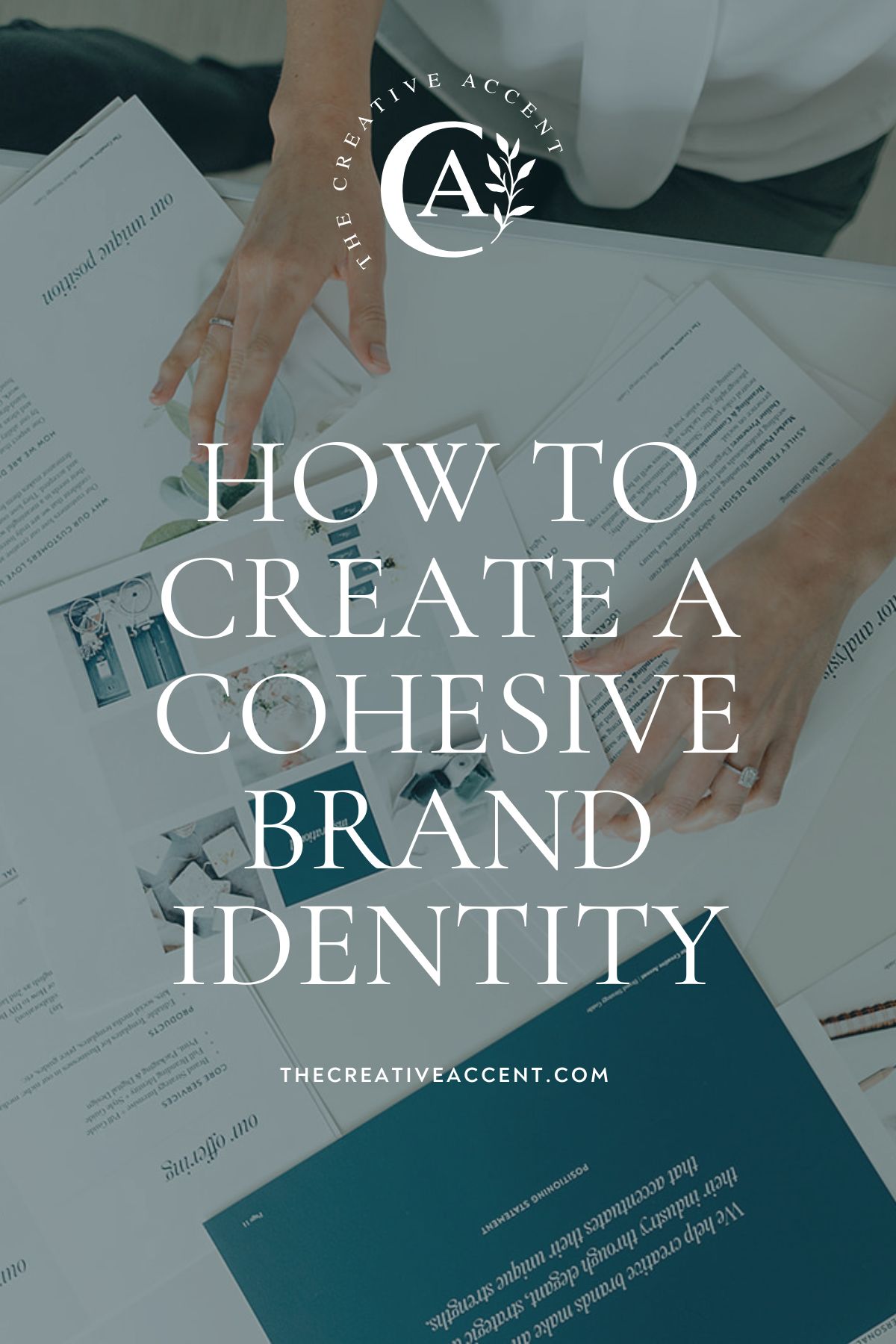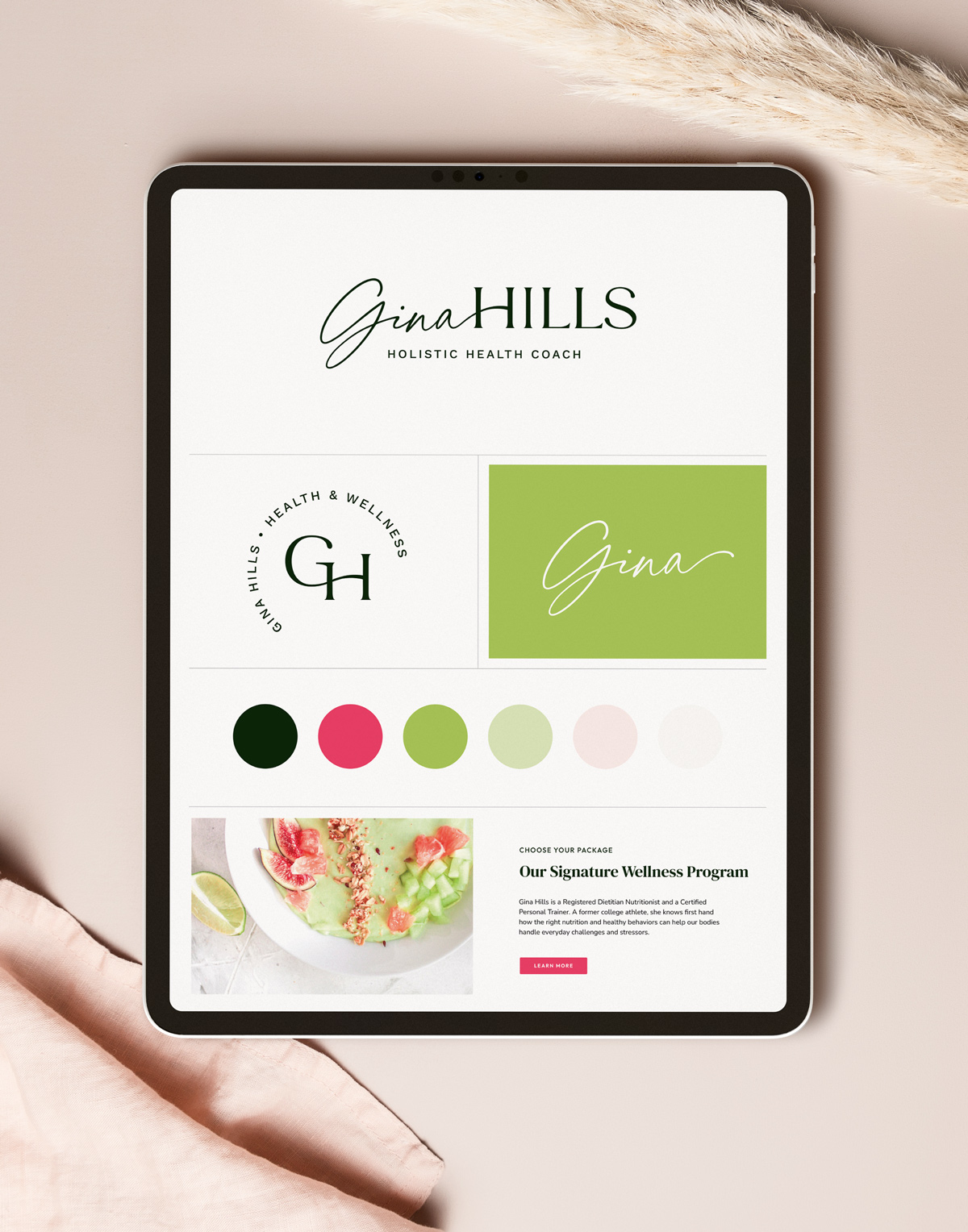Brand consistency: What does it mean and why is it important?
A beautiful moodboard. A trending font. Those cute social media graphics your competitor is using. How easy it is for us creative entrepreneurs to get distracted and stray from our own brand guidelines! So what’s the big deal with maintaining a cohesive brand identity anyway? This article answers this very question and will give you 5 practical tips to ensure your branding remains consistent across all client touch points.
What does it mean to have a cohesive brand identity?
A cohesive brand identity is one that is unified across all platforms. From your website to your stationery, your brand should look, feel, and sound the same. This lets your audience get to know you and, most importantly, recognize your brand. It’s this recognition that helps establish credibility and trust for your brand.
Cohesive Branding builds trust
At it’s core, branding is about the relationship between your business and your clients. Consistency in your look, messaging, and approach lets them know what they can expect from you. This builds trust – trust that’s needed to convert them from browsers to buyers.
Did you know that cohesive branding across all platforms can lead to a 23% increase in revenue? And approximately 81% of consumers need to trust a brand before they consider buying from them according to this report?
Honestly, this shouldn’t shock anybody. I’m actually surprised both of those numbers aren’t higher!
Let’s look at 5 keys to creating and maintaining consistent branding for your business.
1. Be clear on what your brand stands for
The unique story, purpose, and values that make up the heart of your business are foundational. You can think of this as THE WHY behind what you do. This is as much about identifying who your brand is as who it is not. For example, your brand can be community-driven without being bright and bubbly. Attention to detail can be a core value without your brand being “high-end”.
This clarity can keep you from being distracted by what everyone else is doing because you will have a clear vision to set purpose-driven goals that align with your brand. If this step feels overwhelming because you’re too close to the project, our 1:1 Brand Strategy Intensives are designed to help you cut through the noise and move forward in an intentional way.
Practical tip #1
Make two lists: one with qualities that describe who your brand is and the other who it is not. Identify the top 3-4 that resonate most with your brand.

2. Get to know your audience and speak directly to them
Brand consistency is as much about messaging as it is about aesthetics. Bringing a clear message to your audience is not a one-and-done effort. There are multiple layers here that are important for building trust with your audience. A cohesive messaging strategy can include any of the following:
- Brand voice (how does your brand sound?)
- Brand persona (which characteristics do you personify?)
- The key messages about the specific problems you solve
- Communication outlets and frequency (content marketing)
Yes, even consistency in your marketing affects your brand cohesiveness. If you promise a newsletter every week, then make good on that promise! Your audience will learn they can expect it. Do you post daily on Instagram for a few weeks and then vanish for a month? (guilty) You might need to build up that trust and engagement again.
Practical Tip #2
Start a document in Notion, Word or your platform of choice. Whenever you encounter insight from an ideal client about a struggle that you help solve, take note of it WORD FOR WORD. These gems are often found in FB group threads, forums, and even competitor reviews! Get to know the language and terminology they use so you can turn around and use it when communicating about your solution.
3. Have a complete set of brand assets
So many new business owners think only about a logo when it comes to their brand identity. “I just need a logo” is often what leads to a pieced-together brand that lacks the consistency and depth for long-term success.
Sooner or later, an incomplete brand identity will lead you to fill in the gaps out of boredom and necessity. A broader collection of complementary brand assets keeps things interesting and flexible for all the various platforms and touch points. This should include:
- a primary logo design
- an alternate logo
- a submark or monogram
- a color palette with 4-8 complementary colors
- a type hierarchy with fonts styles for titles, subheadings, and body copy
- a brand style guide
- on-brand collateral (business cards, social graphics, media kits, etc.)
practical tip #3
If your branding feels incomplete, now is the time to fully develop it. Read this post on the different options to brand your business.

4. Keep assets organized in a Brand Style Guide
With a more complete set of brand assets comes the need to organize them. This is where a Brand Style Guide comes in. This can be a simple Pdf document that outlines all your brand elements from the logo to colors to typography.
Not only will this help you see at a glance how you should (and should not) style your brand when creating new materials (like social media posts), but it also serves as a handy reference for any outside design help you bring in. For example, if you work with a VA or hire a designer for a VIP Day, having a Brand Style Guide to share goes a long way in helping others keep your brand collateral consistent.
practical tip #4
If you already have a Brand Style Guide, great! Make sure you are sending this along to anyone designing brand collateral for your business. If you don’t have a style guide, you can easily put one together in Canva!
5. Save time with templates!
Developing a solid brand strategy and design assets are part of the long game. You aren’t going to be changing these up weekly. Social media graphics, however, are constantly being used to market your brand and connect with your community. Think Instagram posts, story highlights, and Pinterest pins.
Media kits are another client touch point where it’s important to maintain brand consistency. A template for your welcome guide and proposals can not only save you time, but also helps you fight the temptation to make design changes on a whim that aren’t on-brand.
practical tip #5
Invest in or design your own social media and media kit templates to keep your branding cohesive and simplify your workflow.
A cohesive brand identity gives you a competitive edge
Hopefully you found these tips helpful for creating a consistent brand identity across the many client touch points. Because so many small business owners struggle to keep their branding cohesive on all platforms, it definitely gives a significant competitive advantage to those who do it right! So embrace the challenge and go all in on a brand identity that’s truly unique to you!
